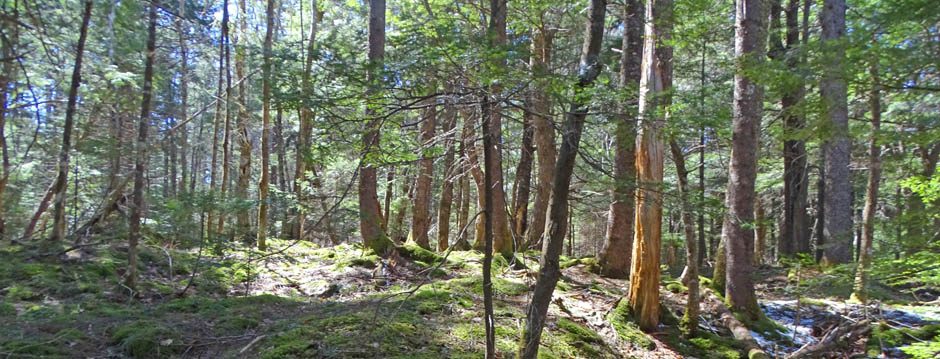| HWA in Nova Scotia Subpages – Eastern Hemlock Notes – About “In the Quiet & the Dark” – Comprehensive Info – The Adelgid – Pesticide Treatment – Biological Control – Silviculture (THIS PAGE) – Post HWA infestation Impacts |
Silvicultural canopy gaps improve health and growth of eastern hemlocks infested with Adelges tsugae in the southern Appalachian Mountains
Albert E. Mayfield et al., 2023. Forest Ecology and Management Volume 546, 15 October 2023. “Results suggest silvicultural release can complement biological control of A. tsugae.” From the Intro: “Historically, little attention has been given to silviculture as a field management tactic for HWA, with the exception of guidelines to salvage dead hemlocks and replant or regenerate HWA-impacted areas with non-hemlock species (Ward et al., 2004). More recently, however, research has suggested that silvicultural treatments that increase sunlight on residual hemlocks may help reduce HWA impacts. Several studies employing different levels of artificial shade on young eastern hemlock seedlings demonstrated a reduction in HWA density associated with elevated sunlight (Hickin and Preisser, 2015, Brantley et al., 2017, McAvoy et al., 2017, Mayfield and Jetton, 2020). In a small-scale field experiment, cutting canopy gaps around HWA-infested hemlock trees increased net photosynthesis and leaf carbohydrates (glucose and starch) in the summer and fall, which was associated with better foliar and radial growth compared to unreleased trees (Miniat et al., 2020). Furthermore, sanitation thinning of uninfested hemlock stands in Pennsylvania greatly increased hemlock diameter and crown area, without substantially increasing foliar nutrient quality in ways that could enhance adelgid proliferation (Piatek et al., 2017, Fajvan and Hille, 2023). In light of these studies, development and evaluation of silvicultural prescriptions that release suppressed eastern hemlocks could complement current tactics to reduce HWA impacts.”
Related: from lit review in Fajvan and Hille 2023:
The effects of HWA on the rate of hemlock-growth decline and mortality have been correlated with crown class and live-crown ratio (Rentch et al. 2009). Infested hemlocks with crowns receiving full sunlight, such as those growing along forest edges or in gaps, appear to survive longer than trees growing in shade. Higher light (Brantley et al. 2017, Hickin and Preisser 2015, Lapham et al. 2018) and temperature (Sussky and Elkinton 2015) may negatively affect HWA survival and promote new shoot growth (Ford Miniat et al. 2020, McAvoy et al. 2017).
